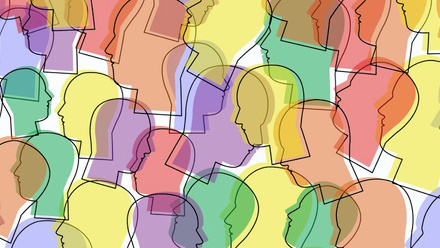Health and wellbeing is the new frontier in the diversity and inclusion discourse

In recent months we have seen businesses become more open, empathetic and human as we have all dealt with the challenges that coronavirus has presented us with. At the heart of our concerns during this time has been the health and wellbeing of employees. Yet, as we adapt to our new normal, this culture of sincerity is already beginning to dissipate as business performance re-emerges as the primary focus.
At the same time, the Black Lives Matter movement has seen businesses step up to make pledges to improve their diversity, eradicate ethnic pay gaps and to ensure greater representation at top levels of their businesses. The move to broaden the diversity focus from gender to other areas is welcome, yet despite these pledges, many organisations are unsure of their next steps.
The answer to both of these challenges lies within employee health and wellbeing.
The relationship between wellbeing and D&I
REBA’s exclusive health and wellbeing as the new frontier in the diversity and inclusion discourse breakfast, held in association with Mercer Marsh Benefits, brought senior reward professionals from an array of sectors together to discuss the relationship between wellbeing and D&I.
Many employers are at the beginning of their journey in understanding the connection between health and wellbeing and D&I. The attendees highlighted that there is a recognition that these two issues are linked. However, understanding what this means for operational actions and strategy, and how this can be articulated across occupational health, heath and safety, and reward and benefits to create a joined-up approach, is still to be identified.
Those that had taken steps in this area had done so in pockets of their health and wellbeing strategy. A key example given by one attendee was through their mental health initiatives. They found that by being more open and inclusive their employees felt that they were better represented within the organisation, which has had a positive impact on mental health. By publishing a D&I calendar they were able to highlight key dates that were important to those who are often under represented, such as religious days, LGBT events and so on. Again this led to a sense of inclusion and crossed over into driving positive mental health.
Other areas that had been considered included the physical wellbeing of those on the frontline during the coronavirus crisis, such as those with disabilities, and thinking about talent acquisition – how to ensure organisational culture, including workplace benefits, are in place to support those from a broader background.
Culture and leadership
In recent months we’ve seen many leaders step-up to be more compassionate, with many making business decisions based on the philosophy of care. In addition, senior leaders are increasingly buying-in to the value of employee wellbeing, as well as the benefits of a diverse workforce.
Yet despite this senior support, getting these initiatives to filter down through middle managers is more challenging. Some attendees highlighted that forcing the issue of greater diversity and inclusion – through targets, annual training and awareness courses – had helped to cut through resistance. However, they acknowledged that this forced behaviour puts a strain on the business in other ways.
One of the attendees added that although quotas to increase gender and ethnic representation in businesses were useful, ultimately these are too compliance driven and we need to move to a position where diversity and inclusion is the cultural norm.
Creating an inclusive culture that supports everyone through their health and wellbeing is an ongoing challenge, yet it is clear that communicating with and educating middle managers about the commercial advantages of this approach will be critical to its ongoing success.
The employee experience
Employee wellbeing and D&I is an extension of the employee value proposition. Some of the employers who attended the breakfast highlighted that, although they were able to attract a more diverse pool of talent, the lived experience of these new recruits did not match what had been promised. As a result, they are struggling to retain talent.
Bridging the gap between employee expectations and the real employee experience is where reward professionals need to focus their attention. Health and wellbeing is key to ensuring employees feel a sense of belonging at work. This can range from practical steps such as ensuring suitable rest facilities for women and men, through to offering Islamic employees the opportunity to invest their pension contributions in a Sharia investment fund.
The value of D&I and wellbeing data
Of course, being able to create the right culture of support relies on understanding and knowing your workforce. The value of accurate wellbeing and D&I data not only influences the employee benefits your offer and your wellbeing initiatives, but it is also critical in convincing leadership and middle management of the value of these plans, which in turn can shift workplace culture and secure the necessary support.
However, obtaining this data – particularly diversity data – can be difficult. The breakfast event attendees noted different experiences in terms of the quality of their employee data. In unionised environments it was felt that employees were more comfortable giving over more in-depth information about themselves. In other organisations, people said employees needed to be trusting of the reasons behind collecting this data, and had to understand why they should give it.
Other barriers included understanding how to integrate wellbeing data with diversity information. A good example of this is absence data. One employer was looking to break its absence data down into age groups, ethnicity, gender – to see if there were any areas of concern.
It’s clear that, in order to ensure workplace culture and health and wellbeing strategy supports all employees, improving the quality of D&I data is essential. There are different avenues to source this information beyond internal HR systems. For example, EAP providers, health insurers, group risk insurers and even pension providers, may have data on employees relating to diversity.
Benefits take-up is another source of information. One of the attendees pointed out that flexible benefits shouldn’t inadvertently exclude people by only focusing on the benefits that the majority take. What the 5% want is just as important and helps to build inclusive cultures.
The challenge for reward professionals is to develop inclusive, flexible reward and benefit strategies that support employees from all backgrounds, of all beliefs, colours and creeds, to build a culture where employees can thrive, be themselves and reach their career goals. Only by creating inclusive workplaces, with health and wellbeing at the centre of employee support, can businesses truly flourish.
The author is Dawn Lewis, content editor at REBA.
Supplied by REBA Associate Member, Mercer
At Mercer, we believe in building brighter futures.







